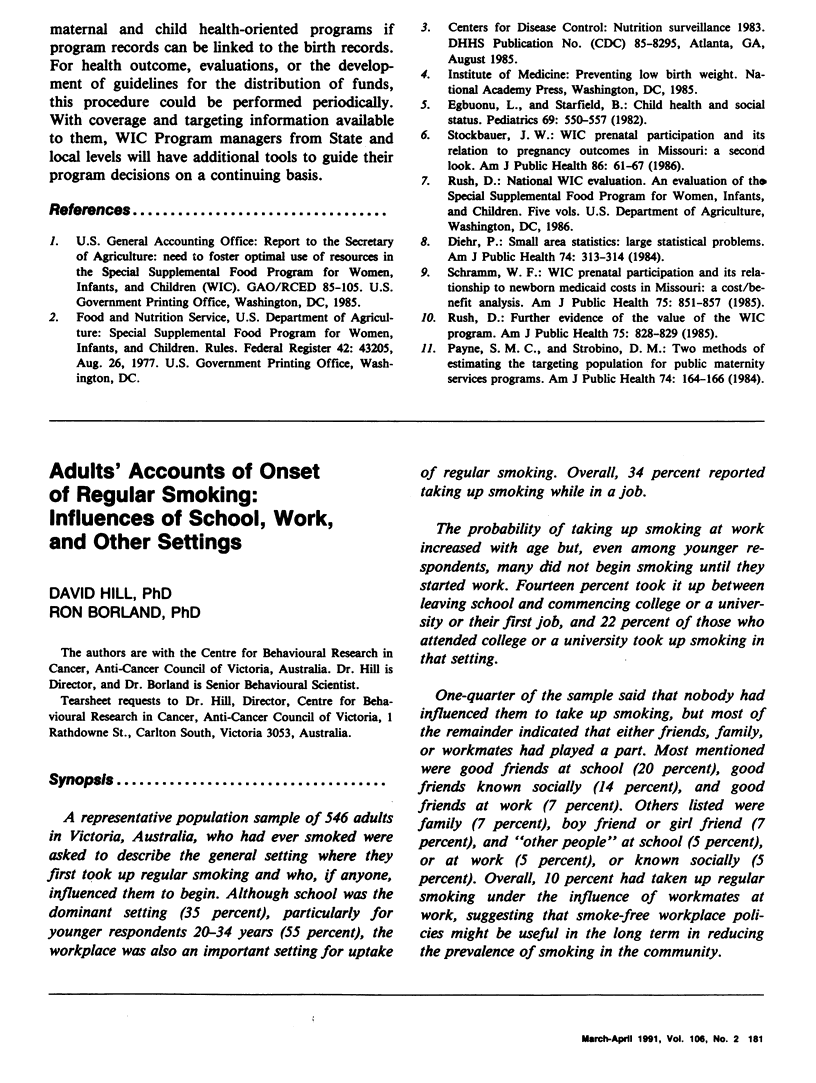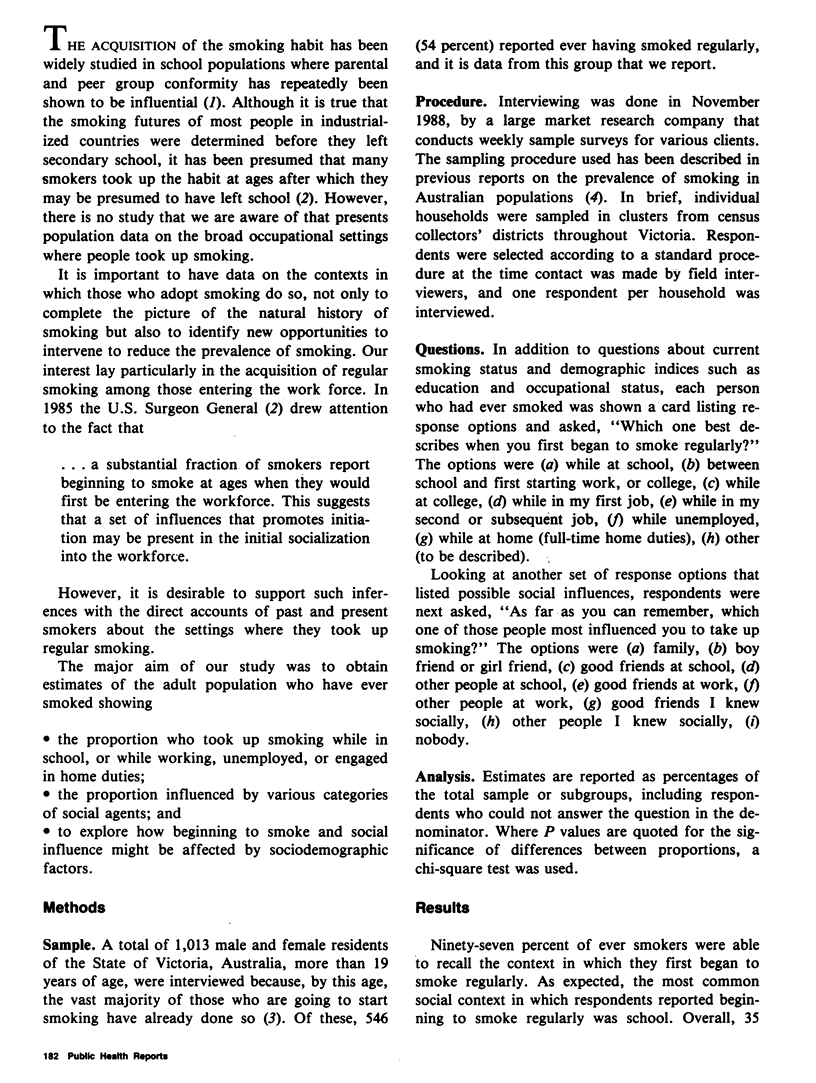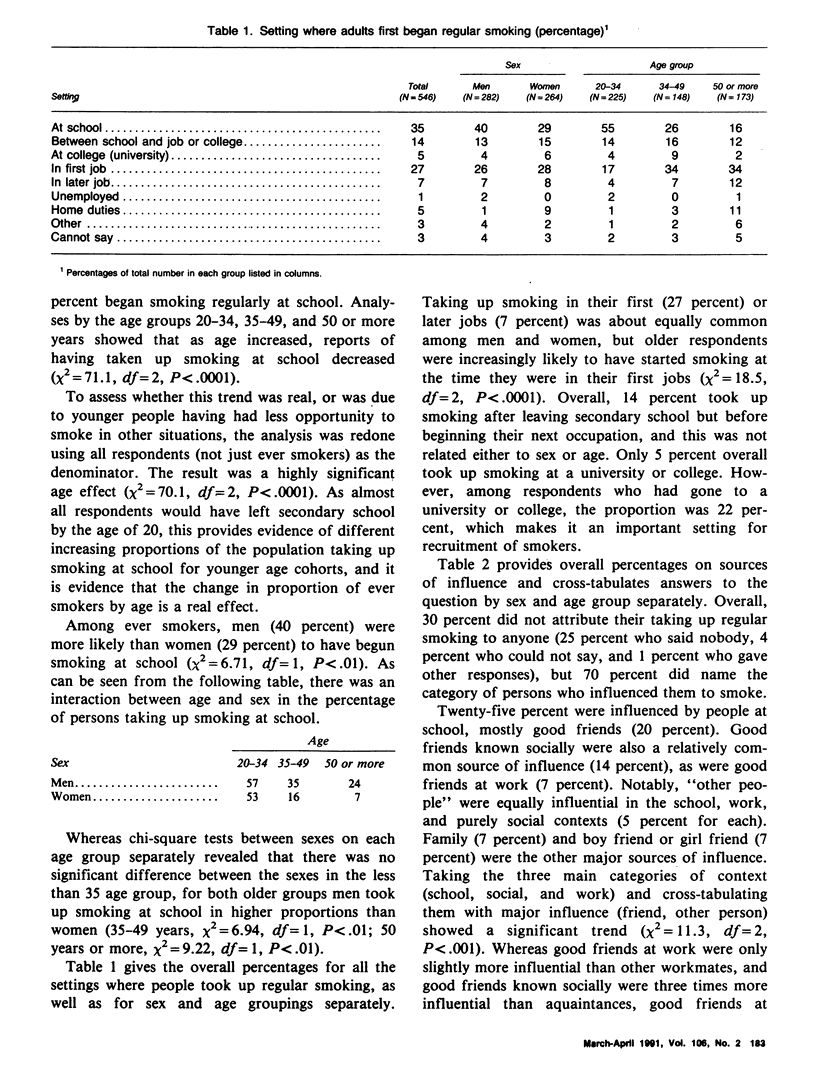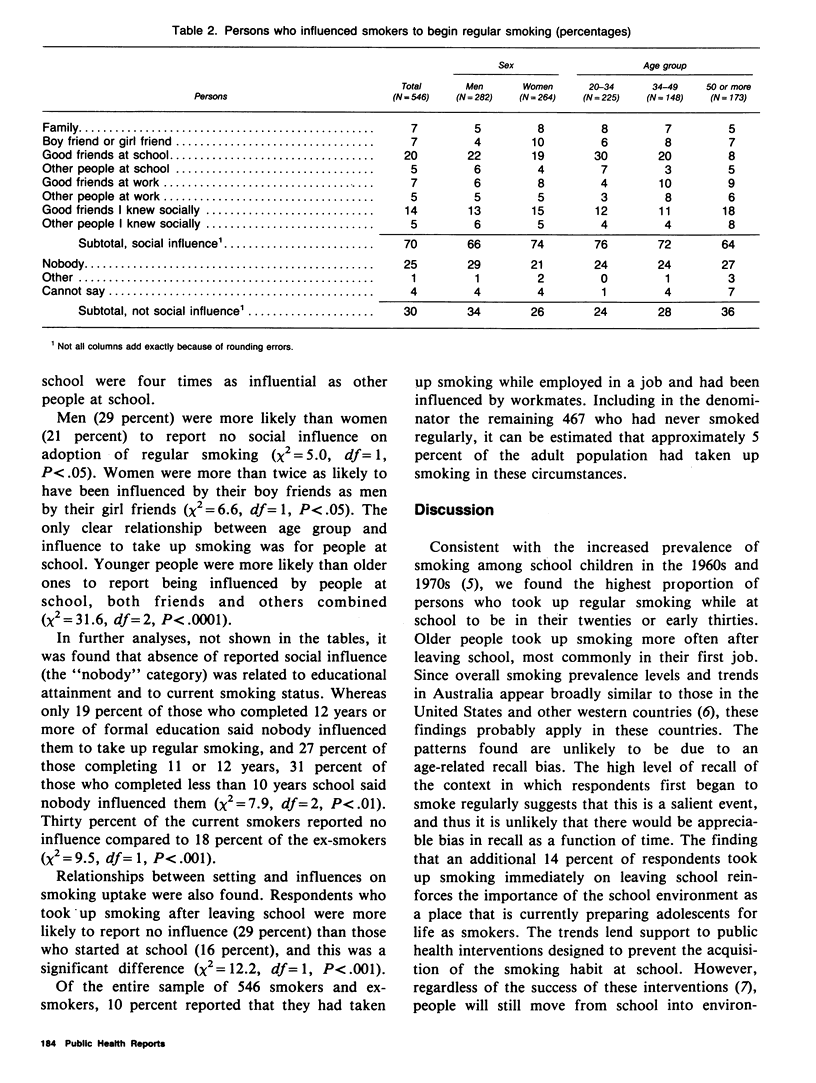Abstract
A representative population sample of 546 adults in Victoria, Australia, who had ever smoked were asked to describe the general setting where they first took up regular smoking and who, if anyone, influenced them to begin. Although school was the dominant setting (35 percent), particularly for younger respondents 20-34 years (55 percent), the workplace was also an important setting for uptake of regular smoking. Overall, 34 percent reported taking up smoking while in a job. The probability of taking up smoking at work increased with age but, even among younger respondents, many did not begin smoking until they started work. Fourteen percent took it up between leaving school and commencing college or a university or their first job, and 22 percent of those who attended college or a university took up smoking in that setting. One-quarter of the sample said that nobody had influenced them to take up smoking, but most of the remainder indicated that either friends, family, or workmates had played a part. Most mentioned were good friends at school (20 percent), good friends known socially (14 percent), and good friends at work (7 percent). Others listed were family (7 percent), boy friend or girl friend (7 percent). Overall, 10 percent had taken up regular smoking under the influence of workmates at work, suggesting that smoke-free workplace policies might be useful in the long term in reducing the prevalence of smoking in the community.
Full text
PDF




Selected References
These references are in PubMed. This may not be the complete list of references from this article.
- Borland R., Chapman S., Owen N., Hill D. Effects of workplace smoking bans on cigarette consumption. Am J Public Health. 1990 Feb;80(2):178–180. doi: 10.2105/ajph.80.2.178. [DOI] [PMC free article] [PubMed] [Google Scholar]
- Borland R., Owen N., Hill D., Chapman S. Staff members' acceptance of the introduction of workplace smoking bans in the Australian public service. Med J Aust. 1989 Nov 6;151(9):525–528. doi: 10.5694/j.1326-5377.1989.tb128500.x. [DOI] [PubMed] [Google Scholar]
- Hill D. J. Australian patterns of tobacco smoking in 1986. Med J Aust. 1988 Jul 4;149(1):6–10. doi: 10.5694/j.1326-5377.1988.tb120474.x. [DOI] [PubMed] [Google Scholar]
- Hill D., Willcox S., Gardner G., Houston J. Tobacco and alcohol use among Australian secondary schoolchildren. Med J Aust. 1987 Feb 2;146(3):125–130. doi: 10.5694/j.1326-5377.1987.tb120152.x. [DOI] [PubMed] [Google Scholar]
- Pierce J. P. International comparisons of trends in cigarette smoking prevalence. Am J Public Health. 1989 Feb;79(2):152–157. doi: 10.2105/ajph.79.2.152. [DOI] [PMC free article] [PubMed] [Google Scholar]
- Rigotti N. A. Trends in the adoption of smoking restrictions in public places and worksites. N Y State J Med. 1989 Jan;89(1):19–26. [PubMed] [Google Scholar]


